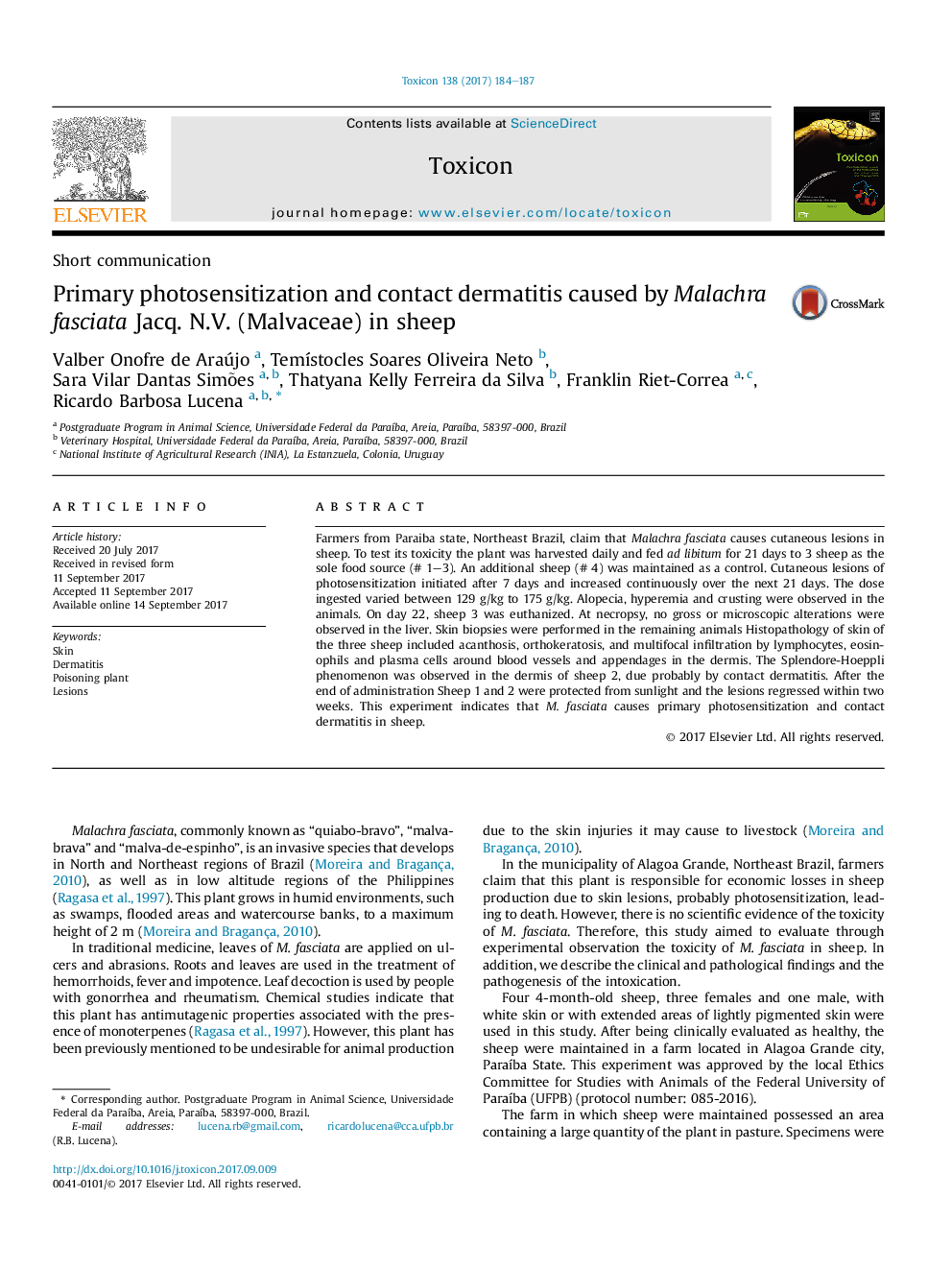| Article ID | Journal | Published Year | Pages | File Type |
|---|---|---|---|---|
| 5519222 | Toxicon | 2017 | 4 Pages |
â¢Malachra fasciata is an invasive plant that develops in Northeast Brazil.â¢Photodermatitis in sheep is associated with the ingestion of this plant.â¢To induce the disease experimental, sheep ingested the plant and were directly exposed to sunlight radiation.â¢Experimentally Malachra fasciata caused photosensitization in sheep.
Farmers from Paraiba state, Northeast Brazil, claim that Malachra fasciata causes cutaneous lesions in sheep. To test its toxicity the plant was harvested daily and fed ad libitum for 21 days to 3 sheep as the sole food source (# 1-3). An additional sheep (# 4) was maintained as a control. Cutaneous lesions of photosensitization initiated after 7 days and increased continuously over the next 21 days. The dose ingested varied between 129 g/kg to 175 g/kg. Alopecia, hyperemia and crusting were observed in the animals. On day 22, sheep 3 was euthanized. At necropsy, no gross or microscopic alterations were observed in the liver. Skin biopsies were performed in the remaining animals Histopathology of skin of the three sheep included acanthosis, orthokeratosis, and multifocal infiltration by lymphocytes, eosinophils and plasma cells around blood vessels and appendages in the dermis. The Splendore-Hoeppli phenomenon was observed in the dermis of sheep 2, due probably by contact dermatitis. After the end of administration Sheep 1 and 2 were protected from sunlight and the lesions regressed within two weeks. This experiment indicates that M. fasciata causes primary photosensitization and contact dermatitis in sheep.
